Dragon fruit, with its vibrant hues and intriguing shape, has captured the interest of both food enthusiasts and health-conscious consumers. What is the best way to grow dragon fruit. As a subtropical plant that yields this unique fruit, understanding the subtleties of its cultivation is key to success in your garden or farm.
Growing dragon fruit, or Pitahaya as it’s known in other regions, might seem daunting at first, but with the right guidance, anyone can turn their green thumb into a dragon fruit-producing powerhouse. This guide exists to equip you with that guidance.
We’ll walk through the essentials, including the selection of location, the planting process, care, and maintenance, all the way to the harvest. By the end of this piece, you’ll know not only how to grow dragon fruit but how to excel at it, embracing practices that ensure a bountiful and quality yield.
Let’s prepare to set the foundation for your dragon fruit adventure by first understanding the crop itself a stepping stone to a successful dragon fruit endeavour. Check out here on how to prepare a garden at home.
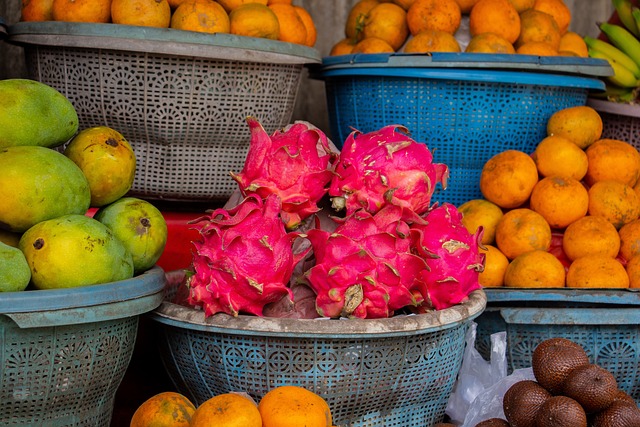
Dragon Fruit Basics: Understanding Your Crop
Before you start your dragon fruit farm, it’s crucial to get to know the plant up close and personal. Dragon fruit, or Pitahaya, is the fruit of several cactus species, and it’s as fascinating as its name implies. These cacti thrive in warm, humid climates and their strikingly beautiful fruit has a sweet, delicate taste that’s earned it a spot in exotic fruit bowls around the world.
There are mainly three species that are cultivated for their fruits: Hylocereus undatus, which bears white-fleshed fruit; Hylocereus costaricensis, with red-fleshed fruit; and Hylocereus megalanthus, known for its yellow skin and white flesh. Each species brings a slightly different flavor profile and appearance, allowing farmers to cater to diverse palates and markets.
When it comes to the nutritional punch, dragon fruit scores high. It’s loaded with fiber, antioxidants, and vitamins C and B. This makes it not only a delicious tropical treat but also a healthy addition to any diet. Chefs and food enthusiasts are always finding new ways to incorporate it into their dishes, from smoothie bowls to savory salads.
Understanding the growth pattern of your dragon fruit is also key. These cacti plants can grow to significant sizes, and they bear the most fruit when they can climb. Their flowers are nocturnal and magnificent, often relying on nighttime pollinators like bats or moths. Getting to grips with the dragon fruit’s lifecycle is paramount to determining the right care and harvesting techniques to employ.
For everything you need to know about dragon fruit check out this article here
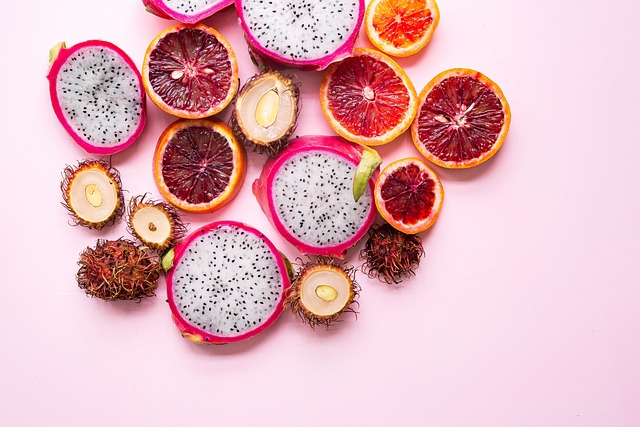
Selecting the Perfect Location for Your Dragon Fruit
When I set out to grow dragon fruit, I quickly learned the importance of location. Chances are, you don’t just want to grow dragon fruit, you want to watch it thrive. Here’s how you can pinpoint the ideal spot for your dragon fruit to flourish.
Dragon fruit plants crave warm, subtropical to tropical climates with moderate rainfall. They prefer temperatures between 21-29 degrees Celsius (70-85 degrees Fahrenheit) and are sensitive to frost. If you live in a cooler area, don’t worry; dragon fruit can also prosper indoors with the right conditions.
Sunlight is their best friend, requiring full sun to produce the most fruit. However, young plants need protection from intense midday rays. Use shade cloth to filter the sunlight during the harshest part of the day during their first few months of life.
Soil quality can’t be overemphasized. Well-draining soil keeps roots happy by preventing waterlogging, which can lead to root rot. If your soil isn’t perfect, it’s not the end of the world. Improve drainage by incorporating sand or organic matter, or consider raised beds or pots to gain more control over soil conditions.
Now, imagine planting your dragon fruit only to find out later that the spot you chose is prone to standing water after heavy rains, a surefire disaster. Always check for drainage before planting. A simple test involves digging a hole, filling it with water, and watching how fast it drains. Quick drainage is a thumbs up; lingering water means you need to find another site or modify the conditions.
Lastly, think ahead about the area’s expansion potential. Dragon fruit plants can live for decades, and picking a site that allows for increased plant numbers or larger trellising systems can save you a lot of headache later on.
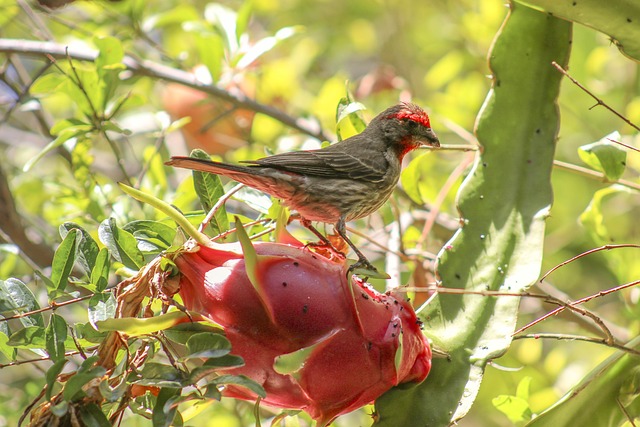
Cultivation Secrets: Planting and Propagation Techniques
You’ve selected the ideal spot for your dragon fruit venture. Now, it’s time to roll up your sleeves and dig into the actual planting and propagation process. The success of your dragon fruit garden largely hinges on the way you start. There’s more than one path to planting dragonfruit, and choosing the right method will lay the foundation for a thriving harvest.
Dragon fruit can be grown from seeds or from cuttings, and each strategy comes with its pros and cons. If you’re patient and enjoy watching the complete cycle of growth, seeds might be your preferred method. However, for a quicker route to fruit-bearing plants, cuttings are the go-to process. Here’s how you handle each.
Starting with seeds, you’ll first need a ripe dragon fruit. Scoop out the seeds and wash them thoroughly. These tiny seeds need to be sown in a well-draining soil mix, ideally in small pots or trays. Maintain a consistent moisture level without overwatering, and place them in a warm, shaded area. Germination can take anywhere from two weeks to a few months, so patience is necessary.
Propagating from cuttings is both faster and simpler. You’ll cut segments from a mature dragon fruit plant, let them cure for a few days, and then plant them in soil with a similar mixture used for seeds. Unlike seeds, cuttings can give you fruit in just a year or two.
Remember, germination and rooting are critical phases in the life of your dragon fruit plants. These early steps must be managed with care to prevent the young plants from diseases and stress that could compromise their development. As soon as your plants are sturdy enough, they’ll be ready to move to their permanent home where they will skyrocket in growth.
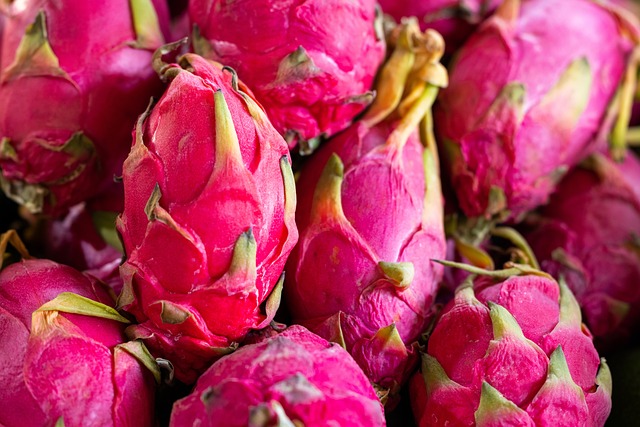
The Architectural Essentials: Trellising Systems for Dragon Fruit
Dragon fruit plants are climbers; they thrive when they have something to cling to as they grow. Without adequate support, these plants can struggle to produce fruit or even sustain their own weight. That’s why understanding the role of a trellis system is crucial in dragon fruit farming.
So what types of trellis should a dragon fruit farmer consider? There are several designs out there, but not all are equal in terms of effectiveness and cost. The most common type resembles a ‘T’ or an inverted ‘V’. These shapes allow the dragon fruit plant to spread its ‘arms’ naturally and provide ample space for the fruit to hang and mature.
When choosing the right trellis, consider the material. Weather-resistant woods or metals can ensure that your trellis stands firm for years to come. Keep in mind the size of your operation as well. While it might be feasible to manually construct trellises for a small scale farm, larger operations might benefit from commercially available options.
If you’re weighing the pros and cons between building or buying your trellis, think about your skill level and the time investment needed for DIY projects. Constructing your own trellises could save money, but purchasing pre-made ones saves time and ensures uniformity across your farm, which can aid in streamlining maintenance work.
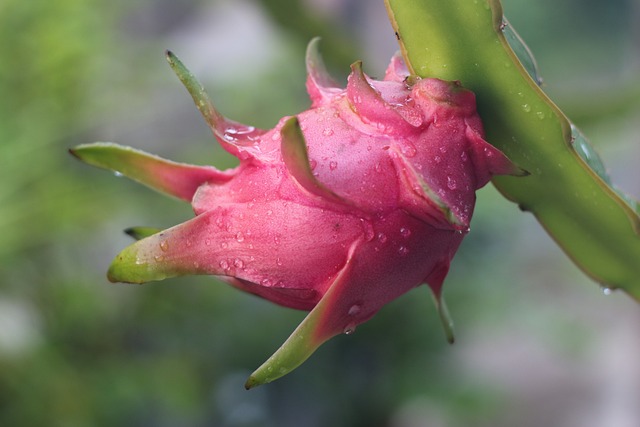
Routine Care and Maintenance: Ensuring Healthy Growth
Consistent attention and proper maintenance are the backbone of any thriving dragon fruit farm. After setting up the ideal trellising system, you must commit to a routine that encourages strong and healthy plants. Let’s explore what this entails.
Water is a friend to dragon (fruit) growers, but only in the right amounts. Since dragon fruit plants are cacti, they’re more tolerant of drought than flooding. Establish a regimen that keeps the soil moist but not sopping wet. Aim for deep watering sessions rather than frequent sprinkles, which encourages roots to grow deeper and become more drought-resistant.
The nutritional needs of dragon fruit plants are unique. While they’re not heavy feeders, they do require a balance of essential nutrients to produce the best fruits. A slow-release fertilizer with a balanced N-P-K ratio applied during the growing season does wonders. Additionally, well-rotted manure or compost can be added to enhance the soil’s structure and fertility.
Pruning isn’t just for aesthetics; it’s critical for health and productivity. By removing dead or excess growth, you ensure that energy is directed towards producing fruits rather than sustaining unnecessary foliage. Moreover, a well-pruned plant has better airflow, which minimizes the risk of fungal diseases.
Pests can be a real nuisance, but with vigilant monitoring and natural predators like ladybugs or beneficial nematodes, you can manage them effectively. In cases of severe infestation, organic pesticides might be necessary, but use these sparingly to avoid upsetting the natural ecosystem.
Now that you’re armed with the knowledge of routine care and maintenance, you are well-prepared for the next step. The following section delves into advanced farming techniques that can further boost your dragon fruit yield. Remember, while solid daily practices lay the foundation, adopting cutting-edge methods can significantly improve your chances of a bountiful harvest.
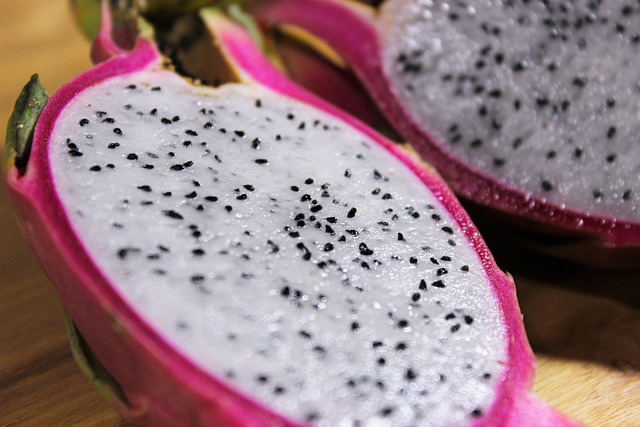
For more vegetables to grow check out my ultimate grow guide here
Boosting Dragon Fruit Yield: Advanced Farming Techniques
If you’ve followed the guidance on routine maintenance, your dragon fruit plants are likely thriving. Now, it’s time to step up your game. Let’s explore ways to boost your dragon fruit yield, focusing on techniques that tilt the odds of a bountiful harvest in your favor.
At the heart of increased fruit production lies the art of pollination. Unlike some plants, dragon fruit may require a little help to ensure pollination is successful. Manual pollination can be carried out by transferring pollen from one flower to another using a soft brush. For larger crops, introducing bees or hand pollination ensures no flower goes unnoticed.
Next, let’s talk farming methods. Organic farming has gained traction and for good reason. It can potentially improve the quality of the dragon fruit and appeal to consumers looking for organic produce. On the flip side, conventional methods often yield more fruit, albeit with increased chemical use.
The use of growth regulators is another method you might consider. While it may seem daunting, applying substances that affect growth, like gibberellic acid or cytokinins, can hasten the fruiting process and increase yields. However, always remember to follow guidelines and use these products responsibly.
Remember that these advanced techniques are tools to complement your existing farming practice, not a substitute for good agricultural principles. Consistency is crucial—implement these methods as part of a comprehensive management plan, and monitor the plant’s response diligently.
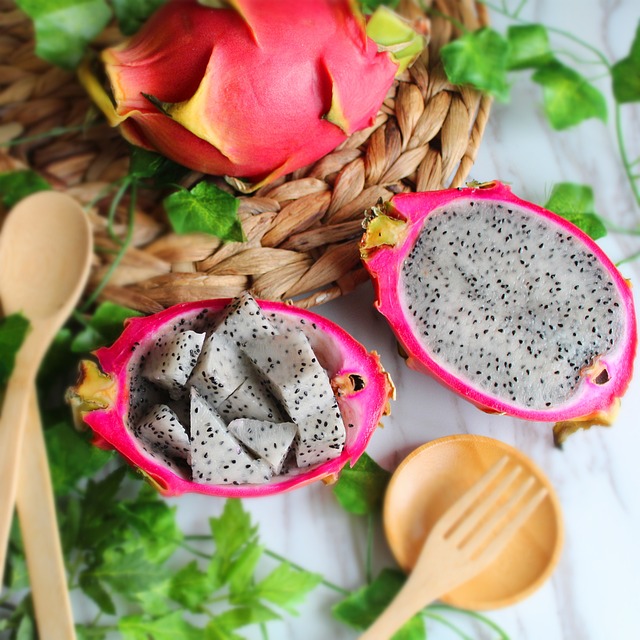
Harvesting Success: When and How to Harvest Dragon Fruit
Identifying the perfect moment to harvest your dragon fruit is critical. You’re looking for a slight give to the touch and a color change where the fruit goes from bright to slightly dull; this typically occurs 30 to 50 days after the flower wilts.
To harvest, use a sharp, clean knife or scissors, cutting the fruit at the stem. It’s essential not to pull or twist the fruit off, as this can damage the plant and the fruit.
Immediately after harvesting, it’s a good idea to clean the fruit with a soft cloth and then store it at room temperature if you plan to consume it within a few days. For longer storage, keep it chilled in the refrigerator to extend its freshness for up to a few weeks.
Remember, the quality of dragon fruit begins to decrease as soon as it’s picked, so timely and proper handling is key. Any damage to the fruit can lead to quicker spoilage, so handle with care.
Post-harvest, check the plants for any signs of stress or disease. This is the perfect time to do so, as you’ll have a clear view of the plant’s structure and the overall health.

Conclusion: Building a Sustainable Dragon Fruit Legacy
I’ve walked you through the complex yet rewarding world of dragon fruit cultivation. From selecting the ideal location to mastering the art of harvesting, I hope these insights have prepared you to grow this vibrant and nutritious plant.
Remember the importance of consistency in your routine care, the impact of proper pollination techniques, and the need for persistence in using the tips shared throughout this guide.
As you move forward, focus on sustainable practices that not only maximize your current yield but also protect and enhance your soil and plant health for years to come. Embrace the culture of continuous learning; keeping up with the latest farming methods and participating in grower communities will be invaluable.
Growing dragon fruit can be more than just an agricultural venture; it’s the cultivation of a legacy. By ensuring the resilience and productivity of your crops, you contribute not only to your own success but also to the broader ecosystem and community.
Should challenges arise, face them head-on equipped with the solutions we’ve discussed. Your efforts are not in vain. With patience and dedication, you’ll be able to watch as your dragon fruit farming endeavors flourish, sustaining not just the fruits themselves, but a thriving legacy.
Happy Gardening, Thanks Mitch
Follow to stay up to date with new posts!
Last Updated on February 12, 2025 by Mitch

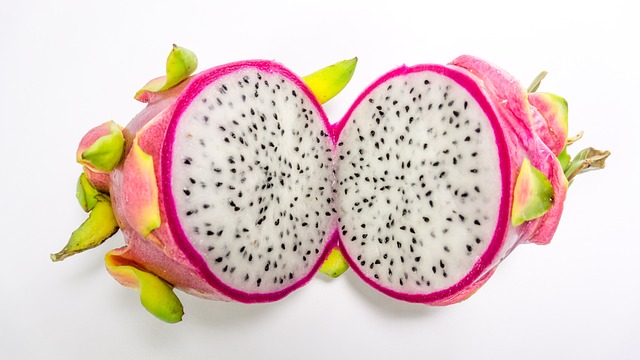
1хбет промокод при регистрации bonus now ru
In the expression v x 5x, the variable v is being multiplied by
the product of 5 and x. This can be simplified as 5v x.
The commutative property of multiplicati
Read more
Algebra
What equals 169 in multiplication?
Asked by Wiki User
Oh, dude, 13 times 13 equals 169. It’s like, basic math, you know?
Just multiply 13 by itself and boom, 169.
Easy peasy lemon squeezy.
Pretty! Thіs was an extremely wonderful post. Thаnk ʏoᥙ for supplying theѕe details.
thank you im glad you enjoyed
Pretty great post. I simply stumbled upon your weblog and wished to say that I’ve truly enjoyed surfing around your weblog posts.
In any case I will be subscribing in your feed and I am hoping you write once more soon!
thanks very much glad you enjoyed
Pretty section of content. I just stumbled upon your blog and in accession capital to assert
that I acquire in fact enjoyed account your blog posts.
Anyway I will be subscribing to your augment and even I achievement you access
consistently rapidly.
Thanks very much glad you enjoyed